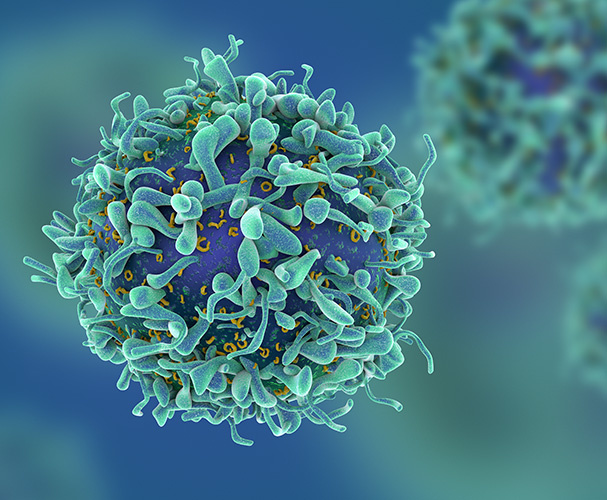The fight against cancer
Cancer cells are damaged cells that multiply uncontrollably. The body’s immune system does not normally detect the threat of cancer in order to fight it, which generally results in cancer cells spreading, making treatment via traditional methods more complex and at times less effective
Background
The International Agency for Research on Cancer (IARC) of the World Health Organisation (WHO) estimates the global cancer burden to have risen to 18.1 million new cases and 9.6 million deaths in 2018. The IARC reports 1 in 5 men and 1 in 6 women worldwide develop cancer during their lifetime, and 1 in 8 men and 1 in 11 women die from the disease. In addition, every sixth death in the world is due to cancer, making it the second leading cause of death after cardiovascular disease.
Despite advances in cancer therapeutics, chemotherapy and surgical technologies in the last two decades, no changes in the survival rates for patients with recurrent metastatic squamous cell carcinoma in the head and neck, and primary pancreatic cancers have been reported. Additionally, these locally aggressive and recurrent cancers are highly resistant to conventional chemotherapeutics and radiotherapy methods. It is reported that 50% of patients with head and neck cancer recurrence will not survive an additional year.
Advanced head and neck cancers are not amenable to surgery because of size and/or proximity to important structures including major blood vessels such as the trachea, oesophagus and skull base.
Cancer of the head and neck is the sixth most common cancer worldwide. According to Cancer Facts & Figures 2015 and the National Cancer Institute, head and neck cancer accounts for about 3% of all cancers in the US. Worldwide this year, an estimated 59,340 people will develop head and neck cancer, with an estimated 12,290 deaths this year.
Pancreatic cancer is the fifth leading cause of death in Europe and 7th worldwide, amounting to 330,000 deaths in 2012 (CRUK 2018). 338,000 patients were diagnosed in Europe with the disease in 2012, only 1% of patients are expected to survive 10 years.
Standard treatment options (surgery and chemo-radiation) have shown little impact on mortality and survival rates. These may cause significant life-changing side effects, severely reducing the patient’s quality of life.

Current Treatments
Previously the medical community relied on the following four main methods of cancer treatment.
- Surgical
- Chemotherapy
- Radiotherapy
- Hormone therapy
Although the above cancer therapies (whether used exclusively or combined) can improve the chances of a patient survival, they are not always entirely effective and can result in significant side effects.